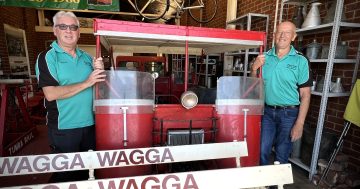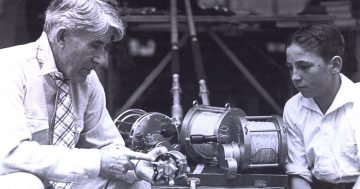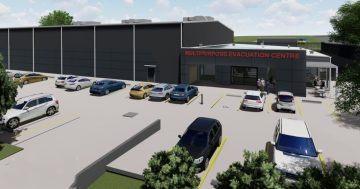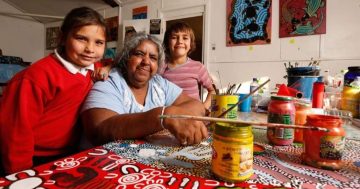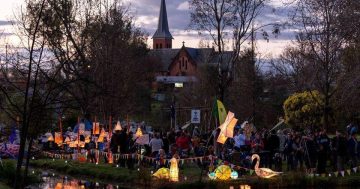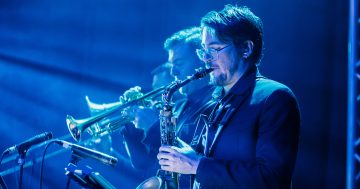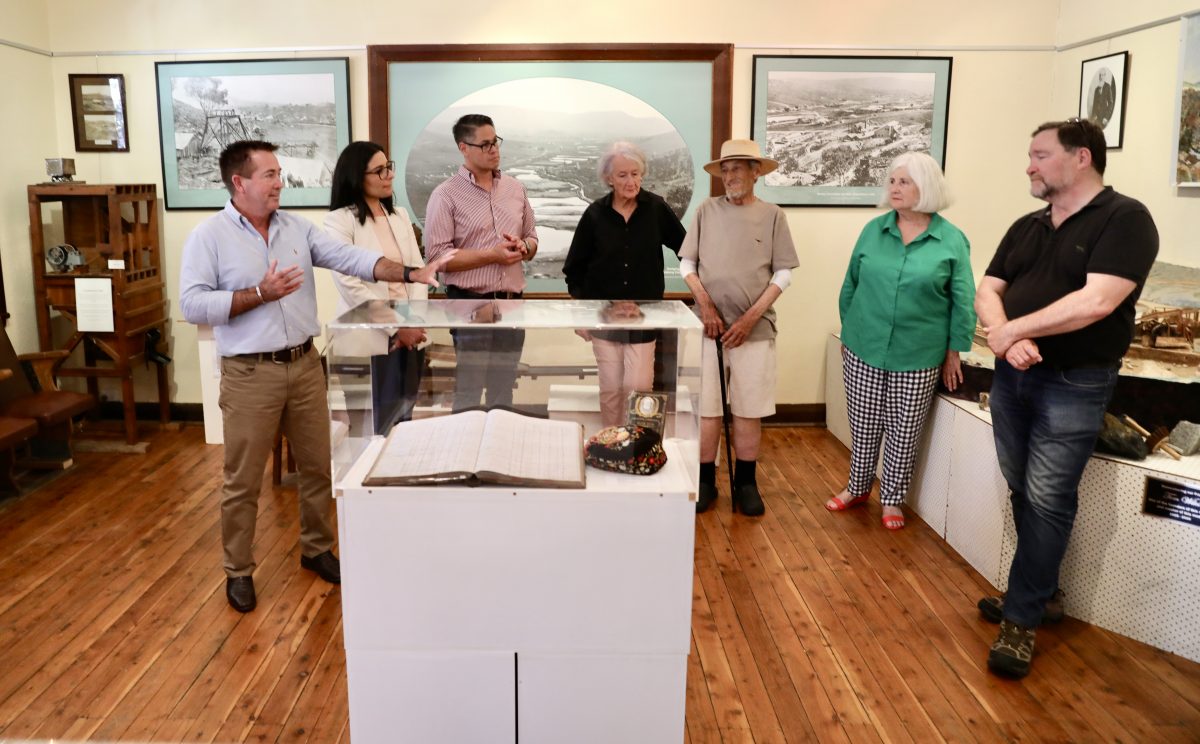
Adelong Alive Museum volunteers were thrilled to receive a grant to upgrade the facility inside and out. Photo: Office of Paul Toole.
The Adelong Alive Museum will receive a new lease of life thanks to a $148,000 grant from the State Government’s Stronger Country Communities Fund.
Funds will be used to carry out major repairs, painting and electrical work to the external and internal fabric of the museum building and to pave the courtyard overlooking the Adelong Creek which will be used for community workshops, school groups and entertainment.
The latest gallery track lighting and downlights will also be installed throughout the repainted gallery spaces.
Deputy Premier and Minister for Regional NSW Paul Toole joined Wes Fang MLC and Nationals’ candidate for Wagga Wagga Andrianna Benjamin to announce the upgrade which will be enjoyed by locals and visitors to the region well into the future.
“Volunteer run and led museums like Adelong Alive are the cultural hub of storytelling, keeping the vibrant history of the region alive for both community and visitors,” Mr Toole said.
Museum committee member Helen Hewson said the makeover would also include the refurbishment of the museum office to provide space for volunteers and researchers to work comfortably and efficiently with the archives, photographic collections and library.
A small kitchen will be installed, as well as a toilet and additional storage space.
“There will be new updated signage for the museum facing the main street and at the back to attract the many visitors walking along the Snowy Valley Sculpture trail to the Adelong Falls, and the historic archaeological site of the Reefer Battery which is part of the museum,” Helen said.
She said the Friends of the Museum and the wider community were “thrilled” about the much-needed maintenance and are grateful for the opportunity to upgrade facilities and equipment which will enable the creation of further educational programs, more exhibition space and the continued implementation of museum protocols.
The Adelong Alive Museum took over the Country Womens’ Association rooms 23 years ago and tells the stories of the Adelong district, beginning in the gold rush period of 1852 and continuing to the present day.
Narratives of the gold mining era and the commercial development of the town form the framework of the museum’s collection and highlight the accomplishments and failures of the people of Adelong and surrounds.
The small but vibrant museum offers a variety of local displays and travelling exhibitions which are rotated regularly.
“Currently we are showcasing the curious collection of Peter Smith entitled ‘Relics of the Goldfields’,” Helen said.
“Born in Adelong, Peter is an avid collector and for this exhibition, as with the previous one on ‘Domestic Life in Colonial Times’ curated by Wendy Lale, we have been pleased to draw on the wealth of knowledge and collections of members of the community. This encourages locals to consider their history and their contribution to its preservation.”
During November and December four schools visited the museum and participated in exciting playacting with actors dressed in costumes and performing in roles associated with life on the goldfields.
“Tents were set up for the gold prospector with his cradle and gold pans, the trooper issuing gold licences and the gold commissioner, splendid in his red uniform, weighing the gold rocks the children found and paying out in gold chocolate coins,” Helen said.
“Cooking, laundering and family life filled another tent and the children joined enthusiastically in all the activities and were suitably alarmed by the sudden appearance of the local bushranger.”
Further activities which tie in with the school curriculum are planned for 2023.
The museum will move into the neighbouring Adelonia Theatre while the renovations are carried out.
“When all is completed, we shall hold a colonial ball where everyone can celebrate our rejuvenated Adelong Alive Museum,” Helen added.
The Stronger Country Communities Fund is part of the NSW Government’s $3.3 billion Regional Growth Fund, designed to support growing regional centres, activate local economies and improve services and community infrastructure in the regions.








